.. after the Roman deities: tunics were styled a la Ceres or Minerva. (sketch: “Mocking the New Regime”; new fashion meets what they considered “old fashioned” in Paris 1794)
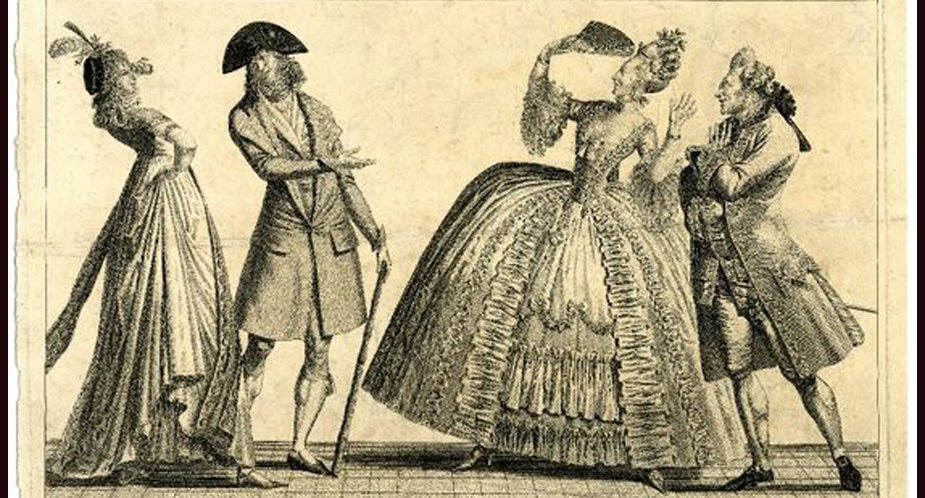

.. after the Roman deities: tunics were styled a la Ceres or Minerva. (sketch: “Mocking the New Regime”; new fashion meets what they considered “old fashioned” in Paris 1794)
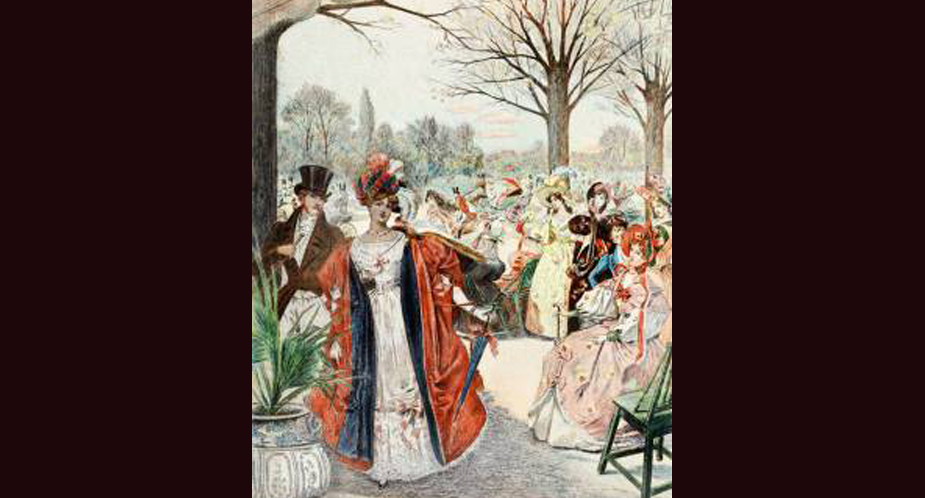
… and Greek-style sandals were all the rage for “Les Meivelleuses”. Sandals were tied above the ankle with crossed ribbons or strings of pearls. Exotic & expensive scents fabricated by houses like “Parfums Lubin” were worn as indicators of social station. (paintings: Merveilleuses in public late in the era) …
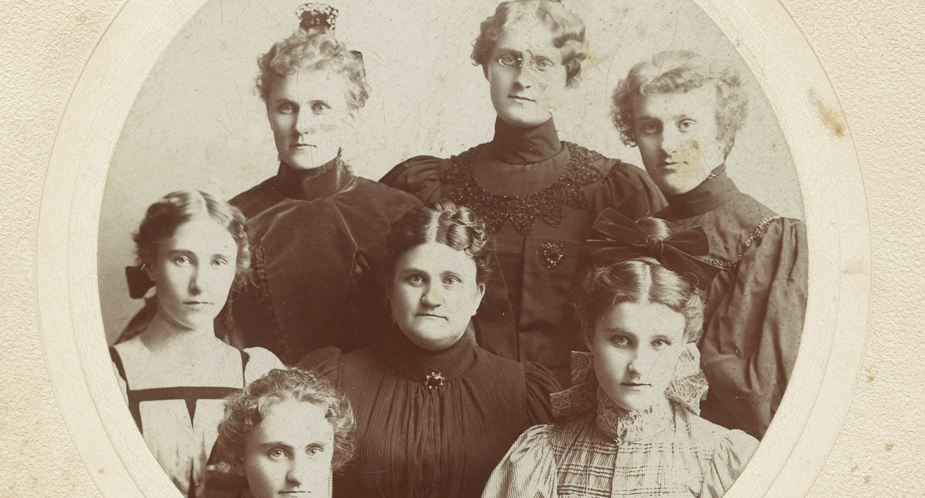
We can do it! (maybe minus the frown…) Give us your photos & ideas, and we can not only help you look like your 5x Grandmothers, but we can help you understand how she FELT while feeding the chickens, riding the streetcar, or showing her feet for the first time. …
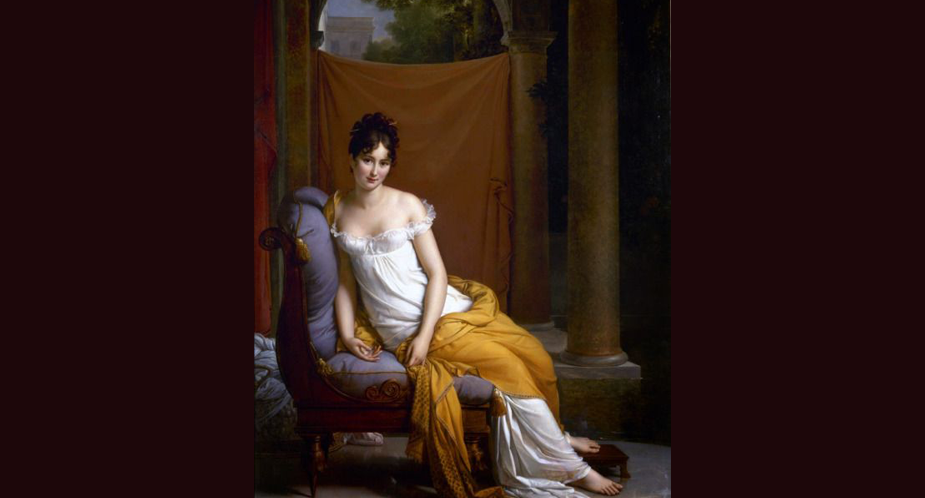
.. one of the head “goddesses” of the Merveilleuses was Theresa Tallien, known as “Our Lady of Thermidor”. Other famous leaders included Jeanne Francoise Julie Adelaide Recamier, & two very popular Creoles: Fortunee Hamelin and Hortense de Beauharnais. Hortense, a daughter of the Empress Josephine, married Louis Bonaparte (Napoleon’s son), …
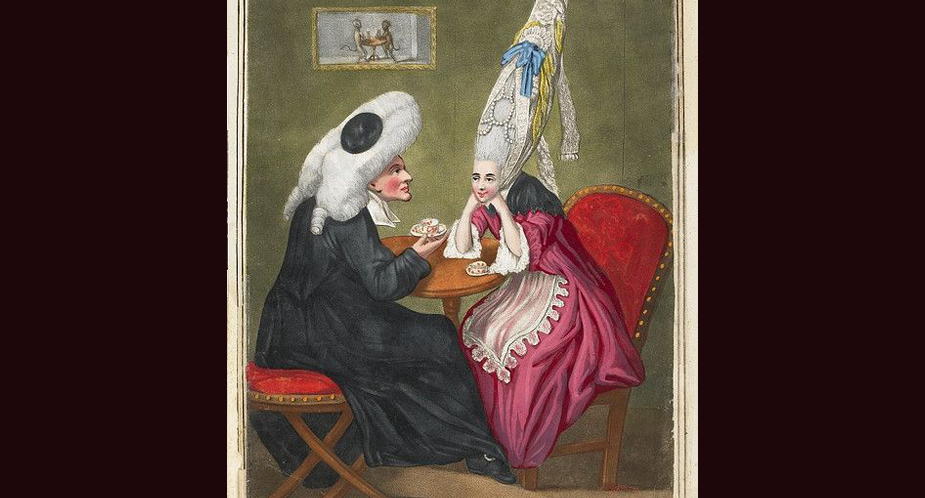
.. because the Paris Commune during the Reign of Terror preceding the French Revolution had banned them. They also wore wigs in black, blue, and green. (sketch: “Little Miss Prattle takes to Doctor Double Fee about her hair”)
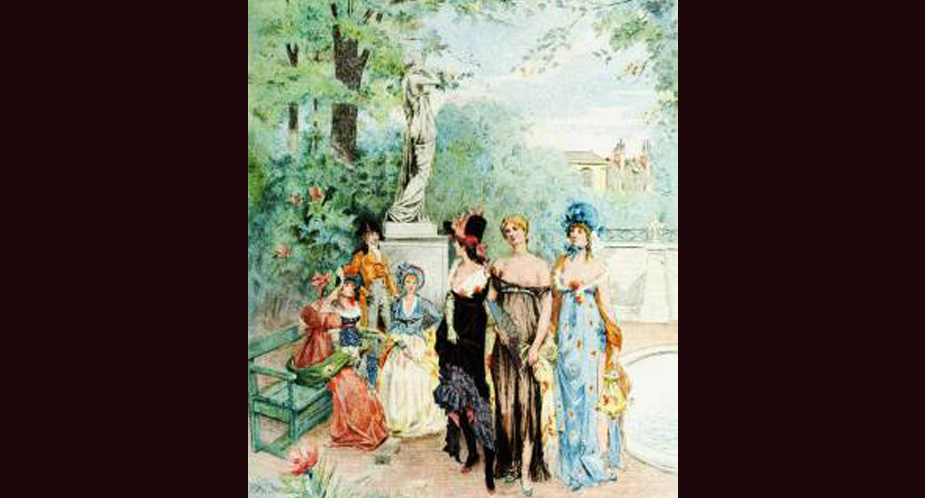
.. the Merveilleuses scandalized Paris as they modeled themselves after the ancient Greeks and Romans. Gowns displayed deep cleavage, & were too tight for pockets. To carry a handkerchief, the ladies carried small bags called “reticules”. (painting: Calling themselves the “Princesses”, a clique-ish group considered themselves the leader of the …
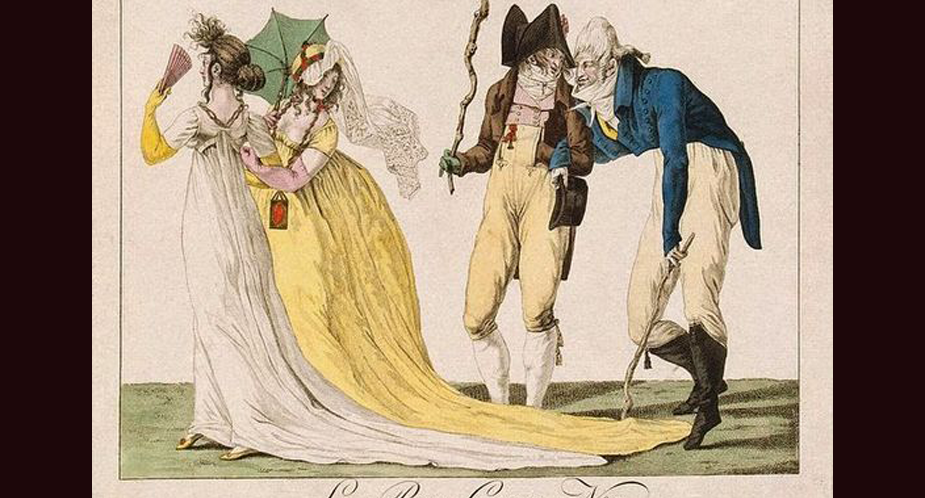
.. & entertainment, the day after Robespierre, a leader of a faction of conflict causing the Reign of Terror was executed. Ornate carriages appeared on the streets, & there were masters & servants in France again. Theaters thrived, & popular music satirized the excesses of the Revolution. One popular song …
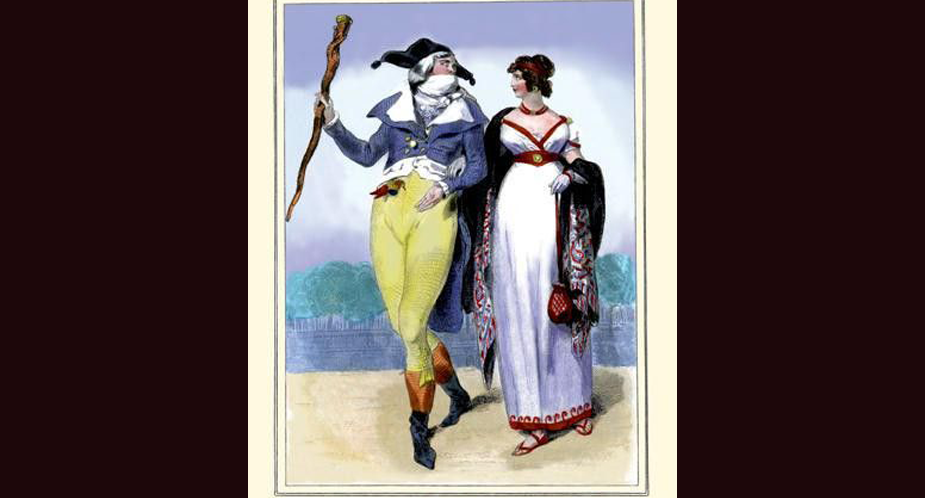
… the young “Merveilleuse et Incroyables” gave lavish balls and parties for the public. They greeted each other doing violent movements of the head as if it was being decapitated, & danced in mourning dress, or wore black armbands. A ball held at the Hotel Thellusson in Paris, restricted the …
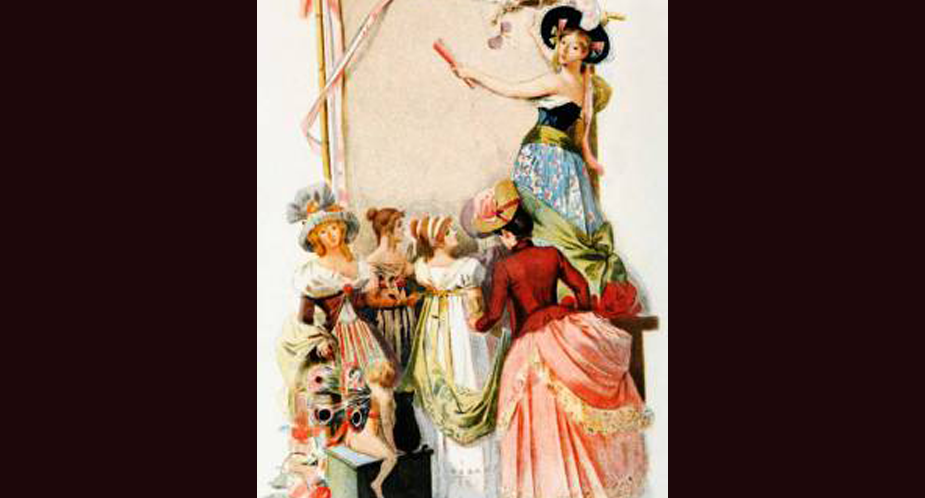
.. Merveilleuses and Incroyables often removed the “R” to become “Meveilleuse et Incoyable” because they wanted to “get the R (Revolution) out of their lives”. (painting: “Merveilleuse avec Nymphs” Daily life for a Meveilleuse was almost as crazy as their parties.)
… in Paris during the French Directoire (1795-1799), which followed the Reign of Terror, & and entered the French Revolution. Merveilleuses meant “marvelous women”; roughly “fabulous divas”. Possibly as a need to reconnect with survivors of those guillotined, or perhaps as a catharsis after the Terror, these young and energetic …